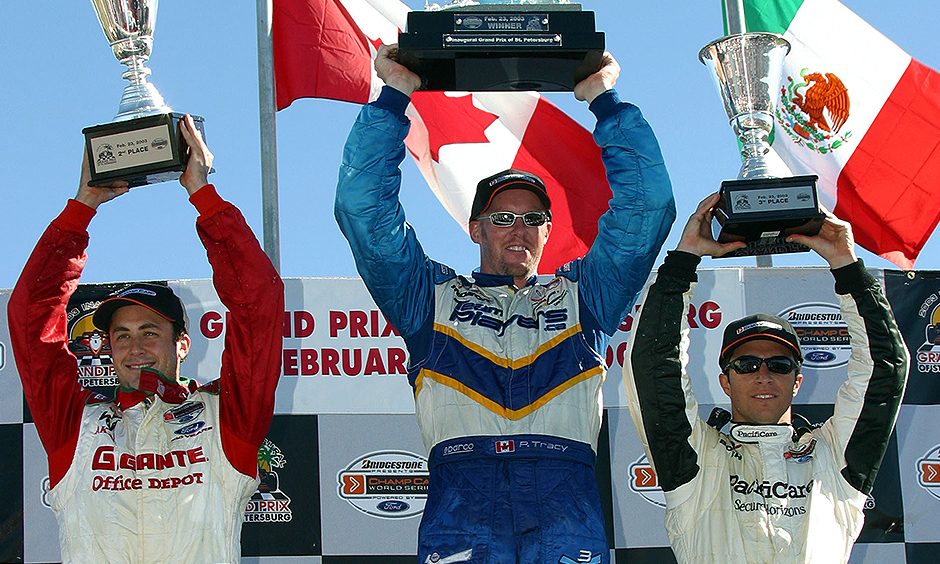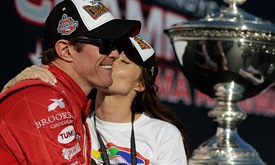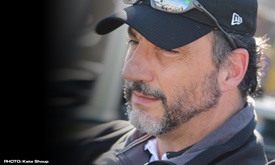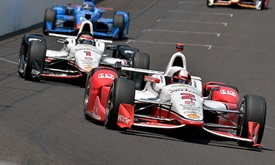Winning first St. Pete race in 2003 pointed Tracy toward title
FEB 23, 2016
Thirteen years ago today, the inaugural Grand Prix of St. Petersburg saw Paul Tracy begin a string of three consecutive victories that set the stage for his first and only Indy car championship.
While many racing drivers recall intricate details of every race they won, Tracy's memory is more big picture than tight focus.
“I don't remember a ton about it — I remember I won, certainly,” said a laughing Tracy, only the second Canadian to win an Indy car title after Jacques Villeneuve in 1995.
“I remember that Sebastien Bourdais had some sort of issue or problem fairly early on in the race and I was running second at the time, and then after that there wasn't really any challenge for me and I just kind of paced the rest of the race. I won three in a row off the start, so it was the best start of the year for me by far in my career.”
The eventual 2003 CART champion started on the front row and took the lead at one-third distance and never looked back, scoring a 12-second victory over Michel Jourdain Jr. (shown on the left in the podium photo above from the race). Bruno Junqueira (right in photo) was third.
Known as “Thrill from West Hill,” the often controversial Canadian joined Gerald Forsythe's powerful team in the off-season as the outfit looked to take the title in its final year under its long-time tobacco sponsor Player's banner. With Canadian anti-tobacco legislation kicking in at the end of 2003, Player's decided to put all its resources behind the fast and furious Canadian in an all-out effort to go out with a bang.
Forsythe also promoted the first race in St. Pete in a one-year deal with CART. There was no race in 2004 until INDYCAR decided to resurrect the event in 2005. It has been on the Verizon IndyCar Series schedule since and has served as the season opener since 2011. The Firestone Grand Prix of St. Petersburg will open the 2016 schedule March 11-13.
“It was a fun track and I enjoyed it,” Tracy said. “I liked the first section of corners. I wasn't too crazy about the tight second section after the back straightaway, but I liked the whole Turn 1-2-3-4 combo and the last chicane was fun — it was flat for us in the cars at the time.”
While Tracy -- now a commentator for NBCSN on Verizon IndyCar Series telecasts -- cruised to victory in that 2003 St. Pete race, it also marked the first time he and soon-to-be arch-rival Bourdais battled on track. The reigning Formula 3000 champion had joined perennial frontrunner Newman/Haas Racing and raised a few eyebrows by taking pole in his first Indy car start.
“I was on pole and leading the race, which was probably a big surprise to everybody, including myself,” Bourdais said. “I knew Paul was obviously going to be really strong and early on we had some good on-track battles and I really enjoyed these moments, but it went sideways when he took me out in Miami, which was one of the last races of 2003.”
While Tracy didn't realize at the time that the pair would soon engage in some bitter fights over the next few years, he did know from the outset that the young French driver would be a force in the series.
“He was the champion in F3000 and, in the past, every guy who had come over from Europe after winning the title in F3000, whether it be (Juan Pablo) Montoya or Bruno Junqueira, they were all very quick right out of the box. So there was no question that if you win a championship at that level you're pretty damn fast,” Tracy said.
“When you are racing with Newman/Haas, you are going to be in good equipment and have the setups — I mean, he was fast.”
The Bayfront course may have remained virtually unchanged since 2003 — save for the addition of “Dan Wheldon Way” to the circuit in 2012 — but the same cannot be said for the Dallara cars now racing on the 1.8-mile, 14-turn circuit. Back in 2003, the Lolas and Reynards relied more on straight-line speed and less on downforce in the corners to gain lap time.
“The level of downforce is quite high on the cars now but they have less power, so the lap times are quick but you are not generating them by straightaway speed,” Tracy said. “It's by cornering speed because you have so much more downforce and they have carbon brakes so they brake pretty late.
“It's a bit of a different mentality because you can't really rely on power: You have to carry a lot of entry speed and carry that speed through the corners.”



















